Lesson 5: The structure of the planet Earth (Part 1)
It is a pleasure to be here as your tutor. I hope that the classes are to your liking and that you can learn much more about our home, Planet Earth.
For this fifth lesson, the topic will be the structure of our planet, the Earth.
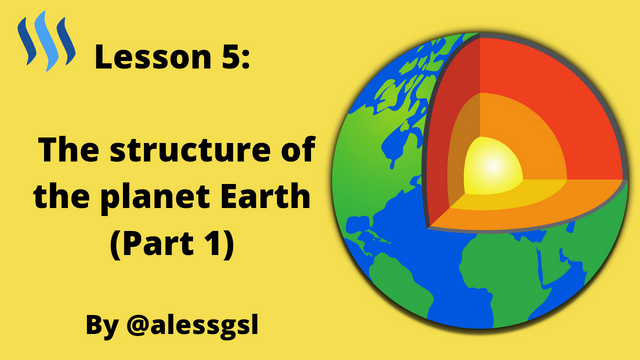

As we know from previous classes, the Earth is a system, which means, it has a structure. In this case, the planet is made up of various internal and external layers (or geospheres).
Next, the inner layers of the planet will be explained. In the next class, we will concentrate on geospheres or outer layers.
Inner layers of the planet
What is known about the interior of the planet is thanks to the Earthquakes. Through
these seismic vibrations that develop throughout Planet Earth, experts have discovered that the globe is made up of three concentric zones: the crust, the mantle and the core.
Following an order from the center of the planet, the inner layers are the following:
1. Core
It is the deepest and hottest layer of Planet Earth. It is integrated by nickel, iron, sulfur and oxygen. It occupies approximately 15% of the volume of the globe.
The core is divided into:
✔️Inner core: It is a sphere with a radius of approximately 1255 km and is completely solid.
✔️Outer core: Surrounds the inner core and is assumed to be in a liquid state.
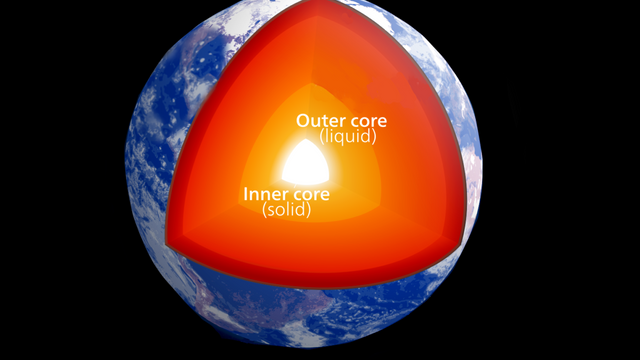
2. Mantle
It is a solid type layer, composed of rocky and solid material, except for the magma areas of volcanoes.
It is made up of two mantles: the exterior, composed of molten materials; and the interior, made of much more solid materials.
Seismic movements develop in it and it is made up of oxygen, magnesium, silicon, among other silicates and minerals.
Unlike the core, the mantle encompasses 84% of the interior structure of Planet Earth.
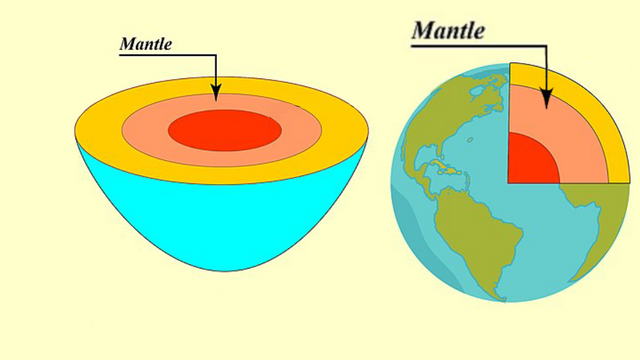
3. Earth's crust
It is the non-uniform outer shell of the globe. It is integrated by:
✔️The Continental Crust: It is made up of the continents, the continental shelf and the slope. This crust consists of granitic rocks, minerals such as quartz and micas, and chemical elements such as oxygen, silicon, aluminum, iron, among others.
✔️The Oceanic Crust: It is made up of plains, abyssal trenches, oceanic ridges and volcanic islands. In other words, it is a type of earth's crust that forms the oceans.
Basaltic rocks are the main ones that make up this layer. On the other hand, there are 3 types of oceanic crust:
- 1st layer: Made up of mud and volcanic rocks, with a thickness of 1.5 km.
- 2nd layer: Made up of mafic and mafic-volcanic rocks. It is 1.5 km thick.
- 3rd layer: Made up of ultramafic rocks and a thickness of 5 km.
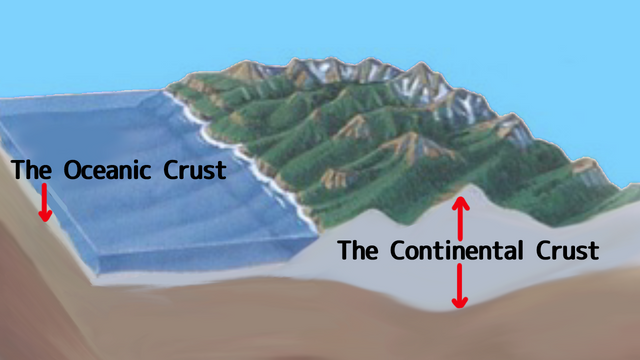
Discontinuities
They are the zones that divide each inner layer of the planet. In them there is a great variation of seismic waves. There are 4 discontinuities, whose names are:
1. Mohorovicic: Discontinuity between the crust and the outer mantle.
2. Goldschmidt: It is located between the outer and inner mantle.
3. Gutenberg: This interface is the one between the lower mantle and the outer core.
4. Lehmann: It is the discontinuity that separates the layers of the nucleus.
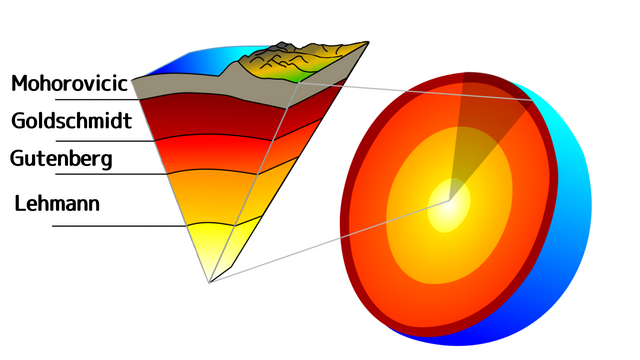

References:
🌍Physical book. Mi Planeta Tierra 2. Author: Prof. Jorge Lösch. Salesiana Editorial.

Task:
Make a post containing the following:
1.Briefly explain the internal structure of planet Earth.
2.Make a drawing or diagram where you mark the inner layers of the planet. Can be handcrafted or digital.
3.Explain in your own words what are the discontinuities in the inner layers of the planet.

Rules for making your publication
1. Make your post in the Steem kids community and leave the link in the comments of this post.
2. Please resteem this post to reach more users.
3. Your content must be original. If you use images or information from other authors, make sure to place the sources correctly.
4. You must belong to a club: club5050, club75 or club100.
5. You must be verified in the community.
6. Your publication must contain a minimum of 300 words and the use of the steemexclusive tag and the club tag.
7. Assignments will be accepted until the expiration of this post.

Previous lessons:

This post is set to contribute 10% of rewards to the @steemkidss community account.
If you want to know me you can visit the following link corresponding to Achievement 1
Felicidades por tu 5ta lección, hiciste un buen trabajo. Que interesante es conocer más a fondo las capas internas del planeta tierra. No tenía idea que el núcleo externo era líquido, en mi mente todo era fuego, calor en el centro del globo terraqueo, jajaja.
Gracias por compartir, éxitos 😀💜
Hola Carlita, muchas gracias!! Que bueno que hayas aprendido algo nuevo con la lección 😃 jeje el núcleo interno se supone sólido y el externo líquido, pero estan a altas temperaturas como el fuego.
Muchas gracias por tu visita y éxitos para ti
Nice post dear,I will be dropping my entry soon.
Greetings dear student, thank you very much! I will wait for your entry
Okay dear tutor.
Thank you very much for the support!!
This was interesting to read
Thank you very much!!
Excelente tema relacionado con las capas internas del planeta tierra. Me pareció muy interesante poder conocer más acerca de su estructura. Espero que muchos niños puedan participar en esta 5ta lección. Muchas gracias por compartir. Saludos y bendiciones para ti 😇🙏
Muchas gracias!! Me alegro que te haya gustado este tema y hayas aprendido algo nuevo. Bendiciones igualmente ❤️
Una grande tutora de ciencias de la Tierra, que bueno ver una lección de buena calidad y excelentes fotos explicativas. Te felicito, muy interesante clase sobre la estructura de la Tierra 🌎 👏 👍
Hola @arcayart!! Muchas gracias 😃 me alegra que te haya gustado esta lección!! Saludos y bendiciones!!
It is very interesting to know what our planet is like in its inner layers, there are still many things to know that may give us some clues about its origin or the origin of the universe. Greetings and many successes.
Thank you very much for your support!! That's right, there are still so many things to discover about the planet and the entire universe. Thank you very much for your visit, blessings